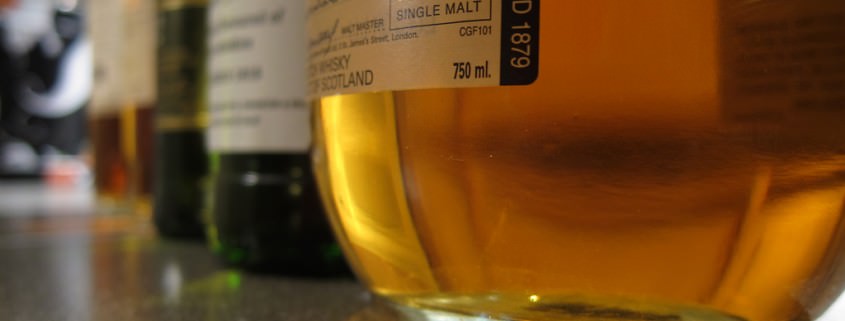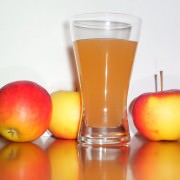Do Your Servers and Customers Know About Scotch?
Scotch has a mystique to it that makes contemplative businessmen swirl it in glasses, makes mothers shy away from it, and makes posing frat boys glug it… but what the heck is it? Here is your definitive guide to Scotch: short enough to teach your staff, and flexible enough to add to your digital wine menu.
Types of Scotch
For all its hype, there are actually only two basic types of Scotch: malt whisky and grain whisky. Malt whisky is made from 100% malted barley, while grain whisky can be made from any grain, but is usually made from corn or wheat. Grain whisky must contain at least a tiny amount of malted barley as well, or it isn’t really Scotch. Can you guess what makes single malt and single grain Scotches distinctive? It’s because they’re made from a… single distillery. (You so didn’t guess the right answer, but that’s okay.) Blended whiskies are a combination of malt or grain whisky from different distilleries. Blended Scotch is a combination of malt and grain whisky, and it is usually sourced from different distilleries. Since single grain and blended grain whisky are pretty rare, this guide will focus on single malt, blended malt, and blended Scotches.
Scotch aging
By law, all Scotch has to be aged in oak casks, in Scotland, for at least three years. If Scotch is made in America it’s simply called whisky, if it’s made in non-oak casks it’s simply called whisky, and if it’s aged less than three years it’s called a spirit.
Scotch regions
When you look at a bottle of Scotch, the label usually says that it’s a “Highlands Scotch” or that it’s an “Islay Scotch.” These honoraries designate the geographical locations in which the drink was distilled and sat in oak casks for no less than three years. Other areas that a Scotch may hail from are: Speyside, Lowlands, and Campbeltown. These areas used to matter a lot more because of tax purposes, and used to really tell you something about the bottle’s flavor, but in the modern world we have so many ways to transport and grow new grains and add new flavors that usually you can safely ignore Scotch’s geographic region.
Scotch flavors
Scotch has the potential for infinite flavor options—sometimes it is smoky, sometimes it is creamy and fruity, sometimes it tastes of honey, sometimes it mirrors the flavor of the sherry left over in the Scotch’s reused casks.
Scotch spelling
If you’ve noticed, this article has left out the “e” every time the word whisky was used. This is because Scotch whisky is traditionally spelled without an “e,” while Irish whiskey is traditionally spelled with the “e.”
Make your own Scotch
If you live in Scotland and have a good supply of oak casks and barley grains lying around, plus three years to wait, you can make your own Scotch by following this simple process:
- Malt the barley by letting it soak in water until it begins to sprout.
- Stop the barley’s sprouting process by blowing hot air on it. If you want a smoky flavor to your homemade Scotch, you’ll want to blow hot, peat-smoky air onto the drying barley.
- Grind the malt.
- Mash the malt with hot water to extract the sugars from it—now the malt is called a wort.
- The wort should be fermented with yeast for at least two days, which will add bubbly carbon dioxide to the wort, meaning it’s changed names again and is now a wash (which is, by the way, alcoholic).
- Once you have your wash, you’ll need to distill it at least two times (this is illegal without a license).
- Now you pour the resulting product into oak casks so that you can mature it for at least three years—but don’t worry about buying a new oak cask, most of the Scotch that is produced has been aged in used casks that formerly contained sherry. The color and flavor of the cask is what colors and flavors Scotch, so the longer you age your Scotch, the more wood-y it will become. This may mean that it becomes a darker color, and it may have a stronger scent.
- Usually, the Scotches you buy at the bar have been vatted, meaning that a master distiller blended a few casks together to create his dream flavor.
- Bottle your Scotch. It doesn’t age and mature in the bottle like wine or a good beer, once you take it out of its cask and bottle it, its current flavor will be captured and will never change again. This means you can drink your bottle of Scotch as quickly or as slowly as you like, and it will always taste the same.
When drinking Scotch, everyone, from that thoughtful businessman, to the shy mother, to the glugging frat boy has a different way to enjoy this delicious beverage. Some people think that Scotch should only be served neat, but truthfully, adding a few drops of water to it can deepen the taste and heighten your enjoyment. Ice and mixers are also popular additions to Scotch. No matter which way you try it, you should make sure to inhale the scent of your drink deeply before each sip. This technique will make you slow down while you’re drinking so that you can enjoy the different flavors and nuances. Remember, if you want a different flavor in your Scotch, just order a different brand; the flavors are truly endless.
Photo licensed for use by Wade Simmons
- Why Your Wine Menu Is Scaring Your Guests - February 27, 2015
- How to Host a Better Restaurant Week and Get More Customers - February 23, 2015
- Choosing Your Restaurant Wine Glass – 3 Approaches - February 16, 2015









